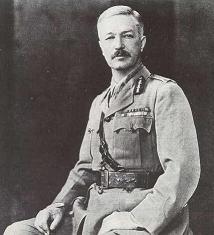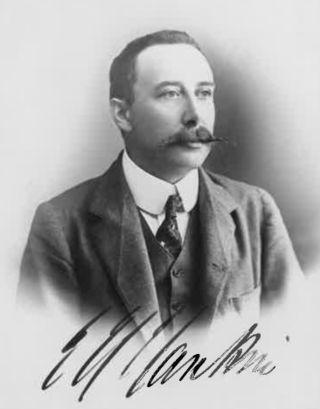
Anatomically modern humans first arrived on the Indian subcontinent between 73,000 and 55,000 years ago. The earliest known human remains in South Asia date to 30,000 years ago. Sedentariness began in South Asia around 7000 BCE; by 4500 BCE, settled life had spread, and gradually evolved into the Indus Valley Civilisation, which flourished between 2500 BCE and 1900 BCE in present-day Pakistan and north-western India. Early in the second millennium BCE, persistent drought caused the population of the Indus Valley to scatter from large urban centres to villages. Indo-Aryan tribes moved into the Punjab from Central Asia in several waves of migration. The Vedic Period was marked by the composition of their large collections of hymns (Vedas). The social structure was stratified via the varna system, which persists till this day though highly evolved. The pastoral and nomadic Indo-Aryans spread from the Punjab into the Gangetic plain. Around 600 BCE, a new, interregional culture arose; then, small chieftaincies (janapadas) were consolidated into larger states (mahajanapadas). A second urbanisation took place, which came with the rise of new ascetic movements and religious concepts, including the rise of Jainism and Buddhism. The latter was synthesised with the preexisting religious cultures of the subcontinent, giving rise to Hinduism.

Urdu is an Indo-Aryan language spoken chiefly in South Asia. It is the national language and lingua franca of Pakistan, where it is also an official language alongside English. In India, Urdu is an Eighth Schedule language the status and cultural heritage of which are recognised by the Constitution of India; and it also has an official status in several Indian states. In Nepal, Urdu is a registered regional dialect and in South Africa it is a protected language in the constitution. It is also spoken as a minority language in Afghanistan and Bangladesh, with no official status.

The Hindu Kush is an 800-kilometre-long (500 mi) mountain range on the Iranian Plateau in Central and South Asia to the west of the Himalayas. It stretches from central and eastern Afghanistan into northwestern Pakistan and far southeastern Tajikistan. The range forms the western section of the Hindu Kush Himalayan Region (HKH); to the north, near its northeastern end, the Hindu Kush buttresses the Pamir Mountains near the point where the borders of China, Pakistan and Afghanistan meet, after which it runs southwest through Pakistan and into Afghanistan near their border.

Hindustani is an Indo-Aryan language spoken in Deccan, Northern India and Pakistan, and used as a lingua franca in both countries. Hindustani is a pluricentric language with two standard registers, known as Hindi and Urdu. Thus, it is also called Hindi–Urdu. Colloquial registers of the language fall on a spectrum between these standards. In modern times, a third variety of Hindustani with significant English influences has also appeared which is sometimes called Hinglish or Urdish.

Sir Edwin Landseer Lutyens was an English architect known for imaginatively adapting traditional architectural styles to the requirements of his era. He designed many English country houses, war memorials and public buildings. In his biography, the writer Christopher Hussey wrote, "In his lifetime (Lutyens) was widely held to be our greatest architect since Wren if not, as many maintained, his superior". The architectural historian Gavin Stamp described him as "surely the greatest British architect of the twentieth century".

Muslim period in the Indian subcontinent is conventionally said to have started in 712, after the conquest of Sindh and Multan by the Umayyad Caliphate under the military command of Muhammad ibn al-Qasim. It began in the Indian subcontinent in the course of a gradual conquest. The perfunctory rule by the Ghaznavids in Punjab was followed by Ghurids, and Sultan Muhammad of Ghor is generally credited with laying the foundation of Muslim rule in Northern India.

Colonel Reginald Edward Harry Dyer, was an officer of the Bengal Army and later the newly constituted British Indian Army. His military career began in the regular British Army but he soon transferred to the Presidency armies of India.

Hindūstān is the Persian name for India, broadly referring to the Indian subcontinent. Being the Iranic cognate of the Indic word Sindhu, it originally referred to the land of lower Indus basin. Later, the term referred to the Indo-Gangetic plain, and became the classical name of the region in Hindi-Urdu. It finally referred to the entire subcontinent since the early modern period. Since the Partition of India in 1947, Hindustan continues to be used to the present day as a historic name for the Republic of India.

Sir William Mark Tully, KBE is the former Bureau Chief of BBC, New Delhi, a position he held for 20 years. He worked with the BBC for a total of 30 years before resigning in July 1994. The recipient of several awards, Tully has authored nine books. He is a member of the Oriental Club.

William Benedict Hamilton-Dalrymple is a India-based Scottish historian and art historian, as well as a curator, photographer, broadcaster and critic. He is also one of the co-founders and co-directors of the world's largest writers' festival, the annual Jaipur Literature Festival.

The tomb of Jesus refers to any place where it is believed that Jesus was entombed or interred before, as believed by Christians, being resurrected.

The Jallianwala Bagh massacre, also known as the Amritsar massacre, took place on 13 April 1919. A large, peaceful crowd had gathered at the Jallianwala Bagh in Amritsar, Punjab, British India, during annual Baishakhi fair, to protest against the Rowlatt Act and the arrest of pro-independence activists Dr. Saifuddin Kitchlew and Dr. Satya Pal. In response to the public gathering, the temporary brigadier general R. E. H. Dyer, surrounded the people with his Gurkha and Sikh infantry regiments of the British Indian Army. The Jallianwala Bagh could only be exited on one side, as its other three sides were enclosed by buildings. After blocking the exit with his troops, he ordered them to shoot at the crowd, continuing to fire even as the protestors tried to flee. The troops kept on firing until their ammunition was exhausted. Estimates of those killed vary from 379 to 1,500 or more people and over 1,200 other people were injured of whom 192 were seriously injured. Britain has never formally apologised for the massacre but expressed "deep regret" in 2019.
Hanklyn-Janklin is a 1992 glossary of Indian English terms and Indian-derived words in mainstream English by Nigel Hankin, named as a tribute to its 1886 forebear Hobson-Jobson.

Ernest Hanbury Hankin was an English bacteriologist, aeronautical theorist and naturalist. Working mainly in India, he studied malaria, cholera and other diseases. He is often considered as among the first to detect bacteriophage activity and suggested that their presence in the waters of the Ganges and Yamuna rivers may have had a role in restricting the outbreaks of cholera. Apart from his professional studies, he took considerable interest in the Islamic geometric patterns in Mughal architecture as well as the soaring flight of birds, culture and its impact on education. He was sometimes criticized for being overzealous in his research methods.

India–United Kingdom relations, also known as Indian–British relations or Indo–British relations, are the international relations between the Republic of India and the United Kingdom of Great Britain and Northern Ireland. India has a high commission in London and two consulates-general in Birmingham and Edinburgh. The United Kingdom has a high commission in New Delhi and six deputy high commissions in Mumbai, Ahmedabad, Chennai, Bangalore, Hyderabad and Kolkata. Both countries are full members of the Commonwealth of Nations.
Abdur Rahman Peshawari, also known as Abdurrahman Bey, was a Turkish soldier, journalist and diplomat who was born in Peshawar in British India.

Rai Sahib / Rao Saheb / Roy Sahib / Rao Sahib abbreviated R.S., was a title of honour issued during the era of British rule in India to individuals who performed faithful service or acts of public welfare to the nation. From 1911 the title was accompanied by a special Title Badge. Translated, Rai means "King" Sahib means "Leader". Awarded during the reign of George VI. For another image of the badge see link This was the start level title usually awarded to civilians, which could later be upgraded to Rao Bahadur and then to Dewan Bahadur titles.

Robert Tor Russell (1888–1972) was a British architect. In his position as Chief Architect to the Public Works Department of the Government of India, he is primarily associated with the development of the city of New Delhi in the early 1930s. He designed some of the city's most notable buildings and was the architect of Connaught Place, the financial centre of the new capital. Russell also served with distinction during the First World War, and later, after retiring from India, became a civil servant for the British Government.

Disposable tableware includes all disposable tableware like

Venu Dattatreye Chitale, also known as Leela Ganesh Khare, was an Indian writer, BBC Radio broadcaster, and secretary to George Orwell during the early years of the Second World War.

















